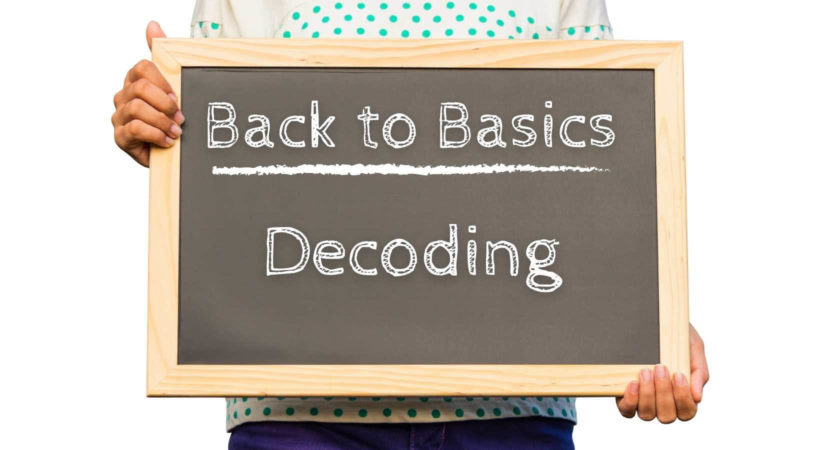
Back to Basics: Decoding
Welcome to our Back to Basics series! In this series we will be exploring some of the foundational methods, practices and terminology for teaching reading. This series is for those new to the field of literacy, beginning tutors or those who would just like a refresher. This week we are discussing decoding, a key skill for learning to read.
Decoding is an essential reading skill for comprehension. So essential, it forms the basis of our organization’s name!
Decoda derives from the word “decode,” which means to create understanding; to unravel the mystery.
Some emerging readers rely on memorizing words and reading them based on recognition. However, this approach often holds learners back when encountering new words. Relying on sight words alone means that learners can’t decipher new words they encounter in print. Readers must be able to recognize letters and letter patterns in order to decode these unfamiliar words and increase their vocabulary. As with most reading strategies, decoding is not intended to be used in isolation. There are two main activities involved in decoding words: phonemic awareness and phonics. To learn more about these activities, take a look back at our Back to Basics post on phonics.
“Decoding is important because it is the foundation on which all other reading instruction builds. If students cannot decode words their reading will lack fluency, their vocabulary will be limited and their reading comprehension will suffer.” – Reading Horizons
Even native English speakers use decoding. For instance, think about the last time you came across the name of a person or place you weren’t familiar with. You most likely sounded it out. In order to successfully decode a word, the reader must know:
- which sound (or sounds) each letter makes. For example: How the g sounds in goose and how it sounds in gel.
- how to take apart the sounds in a word and blend them. For example: with jam, the first sound is /j/, the next sound is /ă/, and the last sound is /m/. Then slowly blend them in “jjjaamm.”
- how groups of letters can work together to make a single sound. For example: The sh in fish. Readers learn these kinds of letter patterns when they study phonics.
Keep in mind that adults with dyslexia may find decoding especially challenging. Contact the library for more resources to support adult learners with dyslexia.
The San Jose Public Library’s Partners in Reading program has a YouTube playlist of videos to assist you with teaching decoding (see the resources listed below). The video below is an introduction to decoding and is the first video in this valuable playlist.
To learn more about decoding, take a look at the resources below or contact the library for more.
Resources
- Challenger series (1-4)
- Making Sense of Decoding and Spelling: An Adult Reading Course of Study
- Partners in Reading – San Jose Public Library: Alphabetics: Decoding/Phonics
- Teaching Reading to Adults – Lesson 2 Alphabetics
- Tutor : a collaborative, learner-centred approach to literacy instruction for teens and adults
Related Blog Posts
Back to Basics: Sentence Combining
Sentence combining is a great exercise that helps learners improve the quality of their writing.
Literacy Podcasts
Read about the growing number podcasts on literacy topics.
Learning about Canadian elections
Today we’re welcoming two guest bloggers from Maria Kenward’s LINC 7/8 class at Windsor Neighbourhood Learning Centre. They write about their successful experience learning about elections in Canada. My first …
